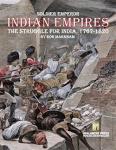![]()
![]()
![]()
![]()
![]()
![]()
This online shop is using cookies to give you the best shopping expierience. Thereby for example the session information or language setting are stored on your computer. Without cookies the range of the online shop's functionality is limited.
If you do not agree, please click here.
x
-
Log in
 Did you forget your password?
Did you forget your password?
No problem! Here you can set up a new password.
You'll receive an e-mail with a link for resetting your password.
If you don't get an e-mail with your access data, please make sure that you have already registered with us. As soon as you are registered, you can login with your e-mail address and your password.
- If you are sure you are already registered, please check the e-mail address you entered as user name.
In case you still have problems logging in, please turn to us by e-mail: orders@ugg.de
- Register


- Service
- Information
- Brands

UGG Online Shop - One of Europe's biggest assortments of boardgames












